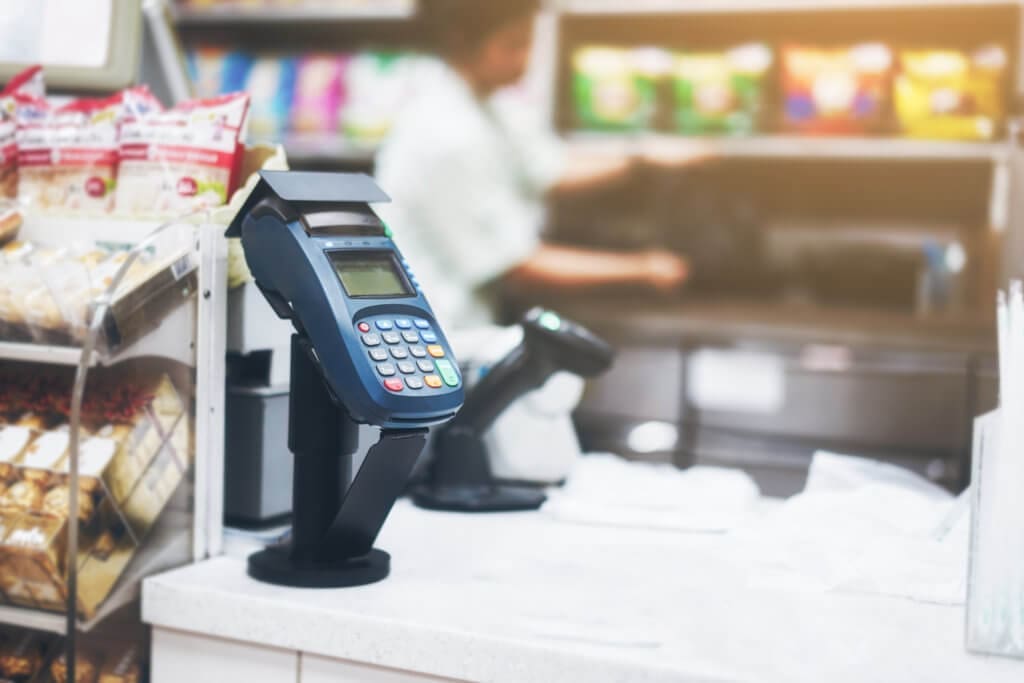Traditionally convenience stores have relied on cash transactions. In 2016, nearly 63% of all transactions were conducted in cash. Store owners have preferred cash, especially for small transactions (less than $20) because they are more profitable than card transactions that come with per transaction and percentage of total fees. Going cashless. During the pandemic, many retailers changed their procedures to avoid cash transactions in an attempt to implement cleaner and safer protocols. In the first month of the pandemic alone (March 2020 to April 2020), the number of retailers taking only card payments (at least 95% non-cash) increased from 8% to 31%. It’s no secret that cash and change are covered with germs and bacteria, and by refusing to accept it, the transmission of COVID-19 was lessened. However, what many retailers learned during this period is that there are other benefits to cashless transactions they hadn’t anticipated.
Consider these facts when you compare “free” cash transactions to card processing fees:
- Cash transactions take longer. From the consumers’ struggles to find the right amount of cash in their wallets to the time it takes the employee to count
 the money, figure out the change, and count it back to the customer. In a busy location or during peak hours, this may slow the line so much that a second or third register needs to be operating–and that means more labor costs on the books. As a comparison, a card transaction takes an average of 2 to 10 seconds to complete.
the money, figure out the change, and count it back to the customer. In a busy location or during peak hours, this may slow the line so much that a second or third register needs to be operating–and that means more labor costs on the books. As a comparison, a card transaction takes an average of 2 to 10 seconds to complete. - Cash transactions are susceptible to errors. While it seems easy, cash handling processes are difficult for many employees, resulting in errors and mistakes. Training employees to handle cash correctly is an investment, and mistakes can add up to significant amounts. Card transactions are always accurate because card terminals are connected directly to the POS system, making the charge amount exact every time.
- Keeping cash on hand makes the store susceptible to crime. Most convenience stores are open 24/7, and receiving money throughout the day makes them a target for theft and robbery. Some stores counteract this risk by performing daily deposit runs to the bank or installing smart safe technology, but both of those options come at a substantial cost. Money received via card transactions cannot be stolen.
- Reconciling cash drawers and setting up cash drawers takes time. Supervisors can spend an hour or more during each shift pulling cash drawers, reconciling them, and then setting them up for the next team. Offages may require research, which takes additional time. Card transactions are always correct because the terminals connect directly to the cash register. Reconciling those transactions happens at lightning speed.
In fact, cash transactions aren’t really “free.” A recent study by Square revealed the following costs associated with cash transactions:
- Reconciling cash drawers
- Rebuilding cash drawers
- Preparing cash deposits
- Mid-shift cash drops
- Change order fees and pickup process
- Armored vehicle costs
- Shrinkage
- Bank fees
- Audits/Researching Discrepancies
Yet, there’s one significant reason store owners have insisted on retaining cash transactions. Many of these stores serve a large population of our communities that is unbanked. Customers may not have access to credit or debit cards, and the fees associated with prepaid cards may be difficult to overcome. However, new technology is busting through that obstacle as well. Mobile payment solutions like PayPal, Venmo, CashApp, and ApplePay now provide opportunities for anyone to have an online financial transaction account. New technology allows store owners to accept payment from all of these types of vendors, making it easy for anyone with a smartphone to pay electronically. And the good news is that as of 2016, 60% of unbanked customers reported having a smartphone, and since then, the number has increased substantially.
What’s the Right Decision for You?
The choice of going cashless isn’t the right decision for everyone. However, it’s well worth considering new possibilities and discovering how new technologies can create efficiencies and savings to boost your bottom line. Our teams at H&S Energy Group are dedicated to helping you implement the right strategies to advance your business. We work with convenience store owners every day to help them understand the needs of their local customers and implement product lines and services to increase their bottom-line profitability. By partnering with H&S Energy Group, we can help your business unlock its potential with new opportunities and achieve unimaginable success. Contact us today, and let’s get started.




